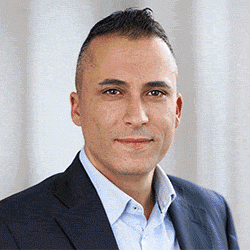A LIGHT look for the largest township in South Africa
The goal was to improve social safety on sports fields in the city's largest township with Licht. "So that the children can play soccer safely," as Enrico Baumann tells us. An idea turned into concrete plans. In 2018, ELEKTRON delivered the first lights to South Africa. Since then, ELEKTRON and the VPUU implemented several projects and illuminated sports fields throughout Khaylitsha.

Monwabisi Park Neighborhood in the township of Khaylitsha, Cape Town
.
Monwabisi Park, Khaylitsha. On October 29, 2019, the new football field was ceremoniously inaugurated in the middle of Khaylitsha, the largest township in Cape Town. ELEKTRON was on site when the sports field lighting was put into operation.
The project "Playground and sports field lighting Khaylitsha" was initiated back in 2016 by Enrico Baumann, CEO of ELEKTRON AG. During his extended stay in South Africa, the collaboration with the VPUU (Violence Prevention through Urban Upgrading), a regional community working for the safe and sustainable development of neighborhoods, was born. With a structured, participatory approach, the VPUU focuses on increasing safety, strengthening social cohesion, and fostering the willingness of all stakeholders to work together to implement projects.
"Instead of writing off lights that are no longer up to the latest technology, we can donate them to the playgrounds and sports fields in the township."
Enrico Baumann, CEO ELEKTRON AG
Light for social security
Light is an important issue when it comes to increasing safety in townships, as Tiago Damasceno (Participatory Architecture VPUU) tells us. Because where there is light, residents meet. Light means visibility, which in turn leads to greater security. That's why the lighting concept for the township was targeted at central connecting routes between community meeting points such as the Active Boxes, train stations or so-called Emthonjeni (meeting places, drinking water point).
Less "Gated" - More "Together
Monwabisi Park is a so-called Active Box. It is a multifunctional neighborhood center run by the residents themselves and designed to promote community spirit. Building community is not something that can be taken for granted in South Africa. The prevailing "gate" culture in all walks of life is still clearly visible and tangible today. People demarcate their homes with fences, walls and gates, so there is no sense of community.
That's why Active Boxes serve several purposes:
- "Safety Point":Active Boxes are built two stories high, making them highly visible "Saftey Points." They serve as a 24/7 point of contact for residents, as there is always someone on site. All Active Boxes are interconnected with well-lit pathways that have also become "main thoroughfares" and are well populated.
- Promoting the idea of community: The sports fields around the Active Boxes and spaces inside the building form the basis for the formation of a community. In addition, today residents can register your "shacks", their cottages. This allows for mail delivery and thanks to the address, residents can open a bank account. (More about Community Registers)
- ECD Program:Also, the VPUU's ECD Program takes place in Active Boxes. ECD (Early Childhood Development) - a kind of kindergarten and preschool education - is one of the most important projects of the VPUU: to show children the right way at an early age - proactively and not reactively.

Image source: VPUU
The VPUU wants to fight crime by preventing it. They act proactively and not reactively. To do this, they actively involve the population in all projects and motivate you to contribute. They offer people alternatives and opportunities to develop - and simply more safety in the townships of South Africa.
More about the VPUU
The VPUU, short for Violence Prevention through Urban Upgrading, is a regional community committed to safe and sustainable neighborhood development. The goal is to improve the quality of life for all residents while reducing crime. Using a structured, participatory approach, VPUU focuses on increasing safety, strengthening social cohesion, and fostering the willingness of all stakeholders to work together to implement projects.

